When the 2005 Ford GT was introduced, it wasn’t just a new entry into the supercar world—it was a celebration of Ford’s rich racing heritage, paying homage to the legendary GT40 that famously conquered Le Mans in the 1960s.
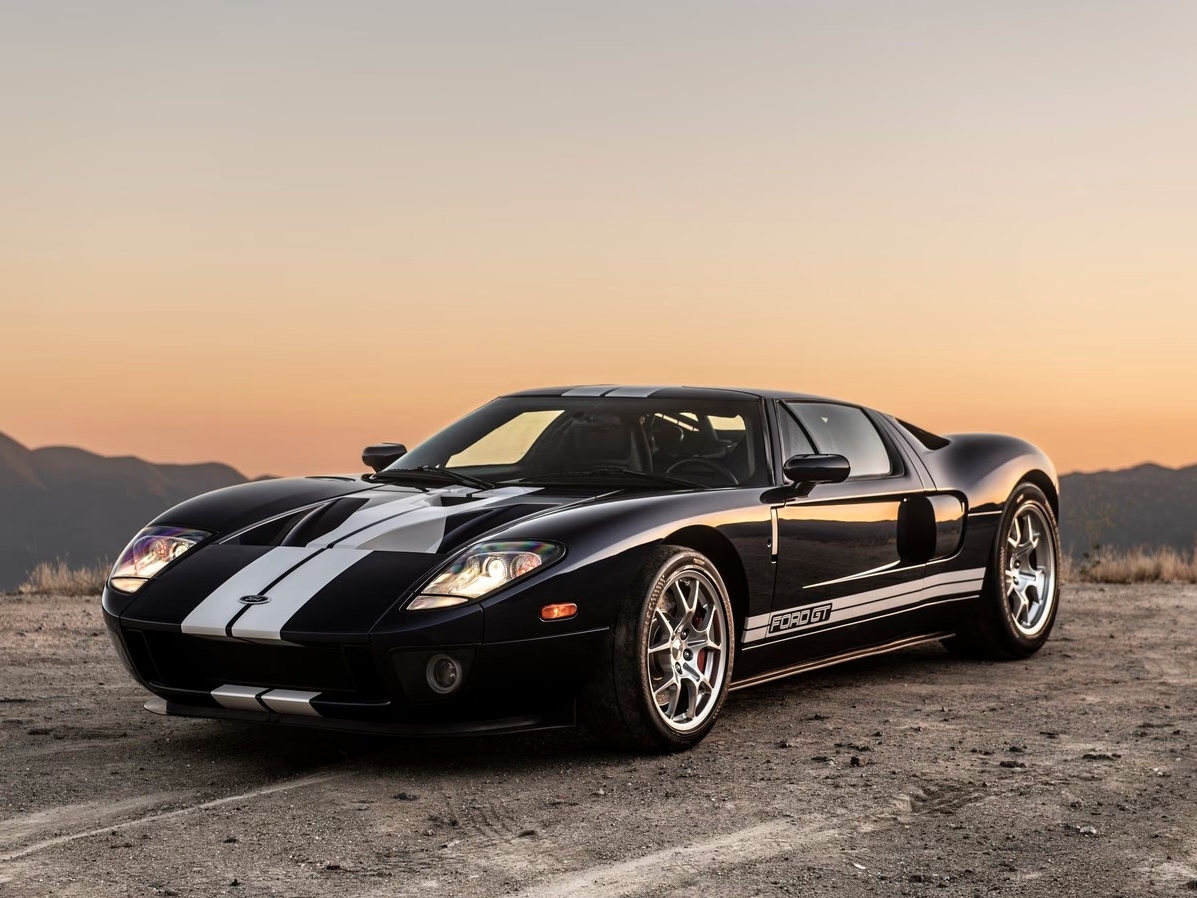
Photo by Kelly Blue Book
Designed as a modern interpretation of its historic predecessor, the Ford GT was a limited-production, mid-engine supercar developed to showcase Ford’s engineering prowess and commemorate the company’s centennial anniversary.
This wasn’t just a design exercise; it was a fully realized performance machine built to challenge the best from Europe, combining retro styling with updated technology.
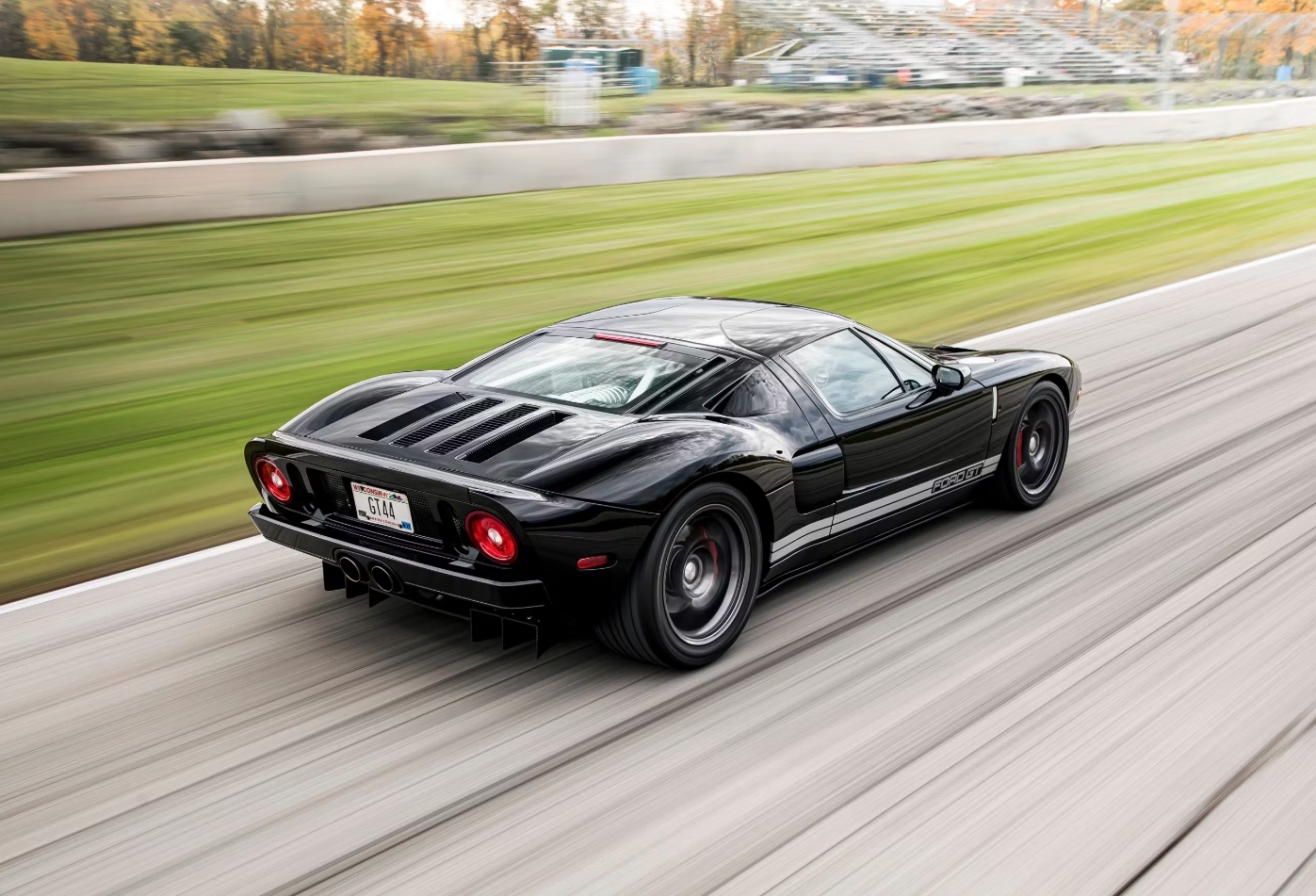
Photo by Hagerty Insurance
At the heart of the Ford GT lies a 5.4-liter supercharged V8, an all-American powerhouse that produces 550 hp and 500 lb-ft of torque. Paired with a 6-speed manual transmission, the GT delivers a thrilling driving experience, launching from 0 to 60 mph in around 3.3 seconds and reaching a top speed of 205 mph.
The engine’s roots-style Eaton supercharger ensures immediate throttle response, while an aluminum block and forged components highlight the car’s race-bred durability.
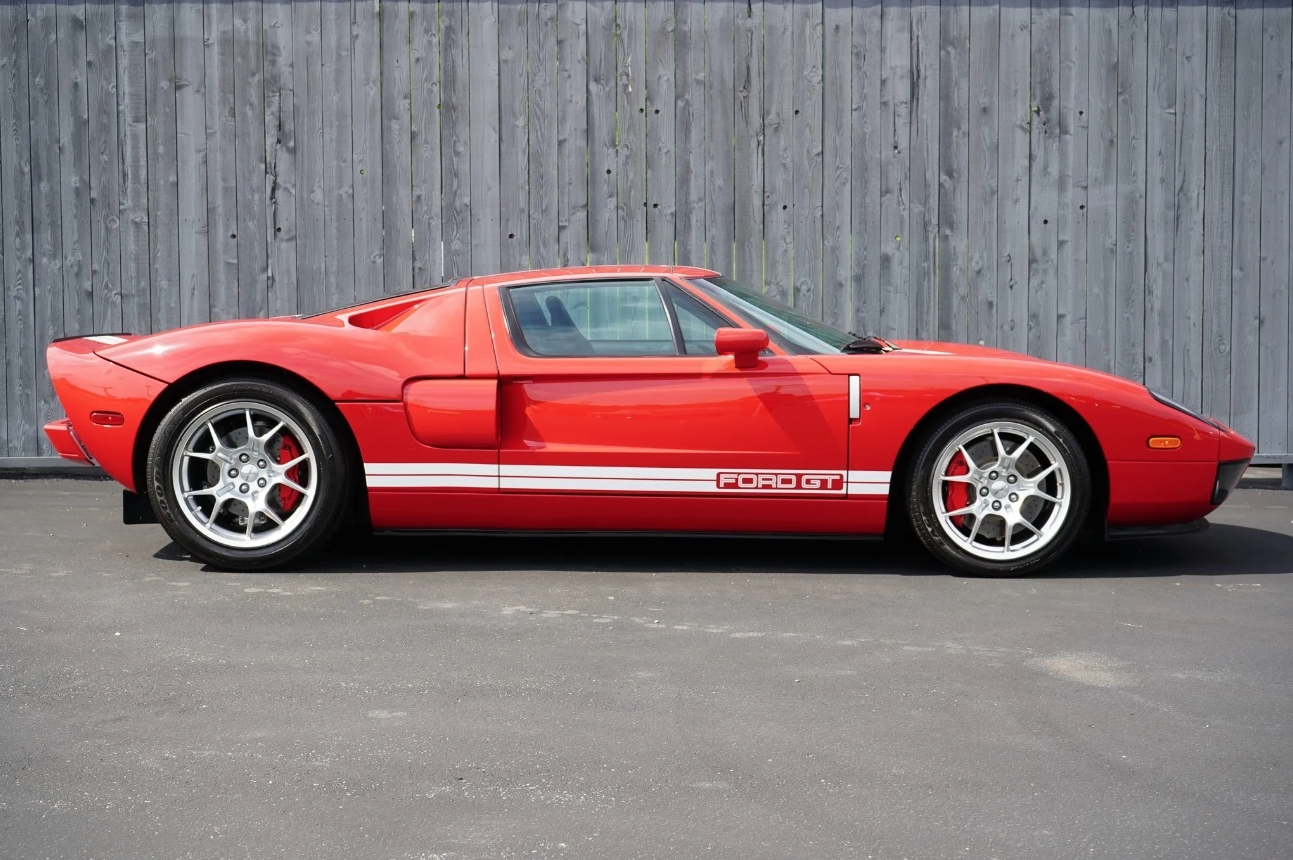
Photo by Bring a Trailer
The exterior design of the Ford GT stays remarkably faithful to the GT40, with its low-slung stance, aerodynamic shape, and distinctive side air intakes. Modern touches, such as HID headlights, lightweight aluminum body panels, and an integrated rear diffuser, contribute to both aesthetics and performance. The car’s signature clamshell rear hatch, housing its mid-mounted V8, is a visual and mechanical spectacle, echoing the race car’s heritage.
Inside, the Ford GT’s cabin features minimalist racing elements and modern comforts. The carbon-fiber and aluminum interior keeps weight down while delivering a raw, driver-focused feel. GT40-inspired toggle switches, a wide center tunnel, and deeply bolstered leather seats made by Sparco reinforce the connection to Ford’s motorsport legacy.
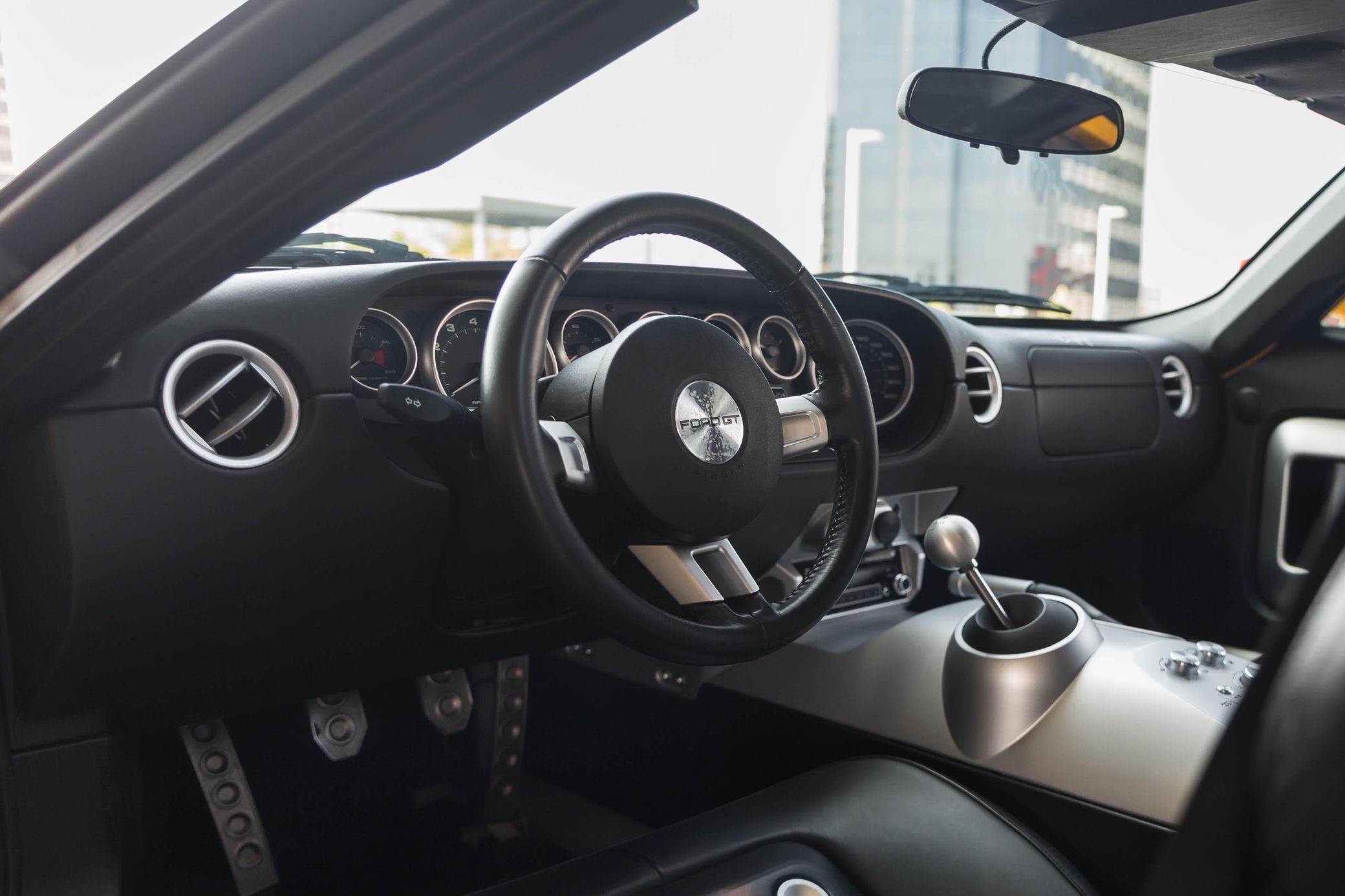
Photo by Cars and Bids
Throughout its production, the Ford GT competed in the elite supercar segment against some of the most iconic performance machines of its time. Rivals included the Porsche Carrera GT, the Ferrari 360 Challenge Stradale, and the Lamborghini Murciélago, each offering its own take on speed, and exclusivity. Yet, the Ford GT stood out with its blend of American muscle, heritage-inspired design, and accessible performance, making it one of the most celebrated modern supercars.
Model Changes (Breakdown by Year)
2005 Ford GT
The 2005 Ford GT marked the debut of Ford’s modern supercar, designed to commemorate the company’s centennial anniversary and pay tribute to the legendary GT40 that dominated Le Mans in the 1960s. I
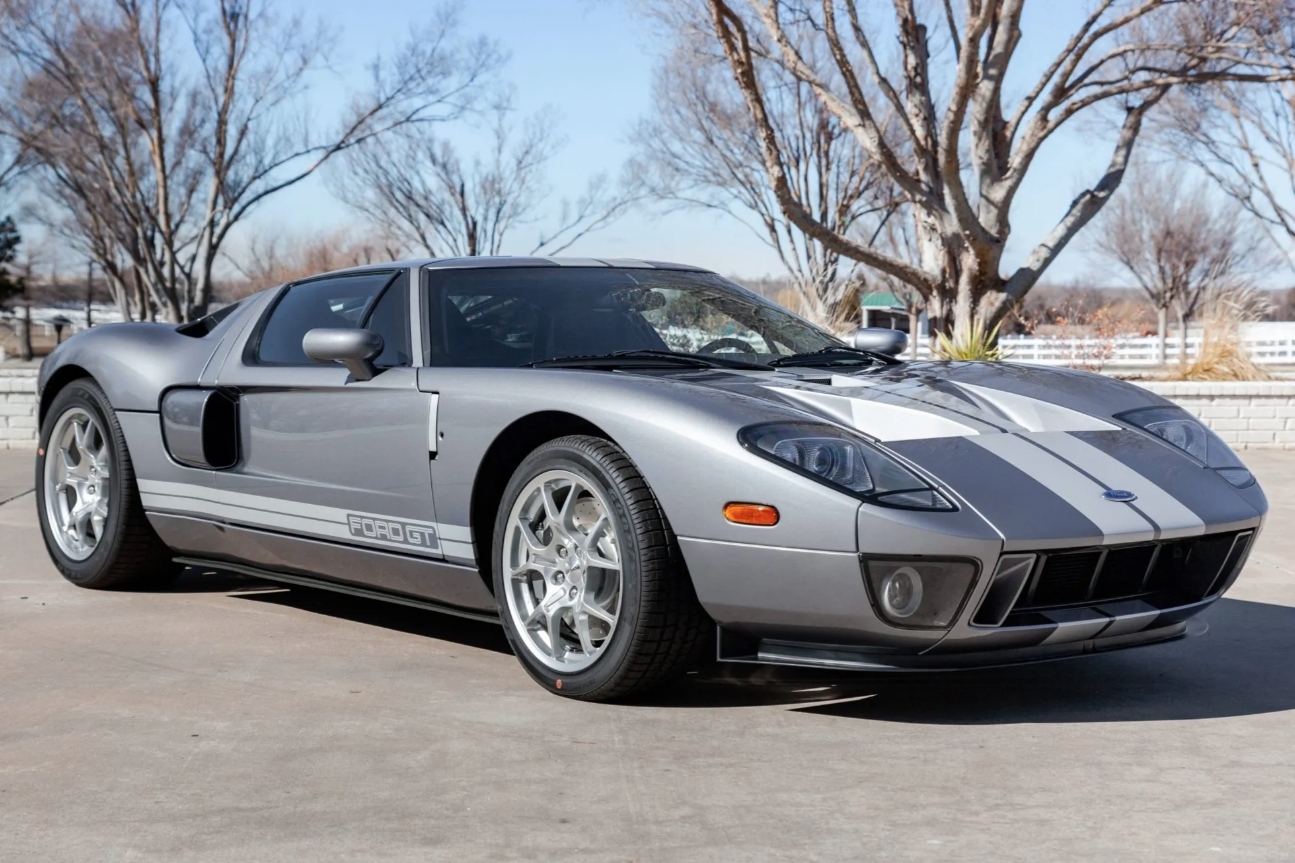
Photo by Bring a Trailer
n its first production year, Ford built 2,022 units, offering the GT in four striking colors: Mark IV Red with white racing stripes, Midnight Blue with white racing stripes, Centennial White with blue racing stripes, and Quick Silver with black racing stripes.
Beneath its sculpted body panels, the 5.4-liter supercharged V8 engine produced 550 horsepower and 500 lb-ft of torque, sending power to the rear wheels through a 6-speed Ricardo manual transmission.

Photo by Bring a Trailer
Structurally, the Ford GT featured a lightweight aluminum spaceframe chassis, combined with carbon fiber and aluminum body panels, ensuring an optimal balance of strength and weight. Performance components included BBS forged aluminum wheels, Brembo brakes, and Goodyear Eagle F1 Supercar tires, all contributing to the GT’s exceptional handling and braking capabilities. I
Inside, the cabin retained a driver-focused design, featuring leather-trimmed bucket seats, aluminum accents, and GT40-inspired toggle switches.
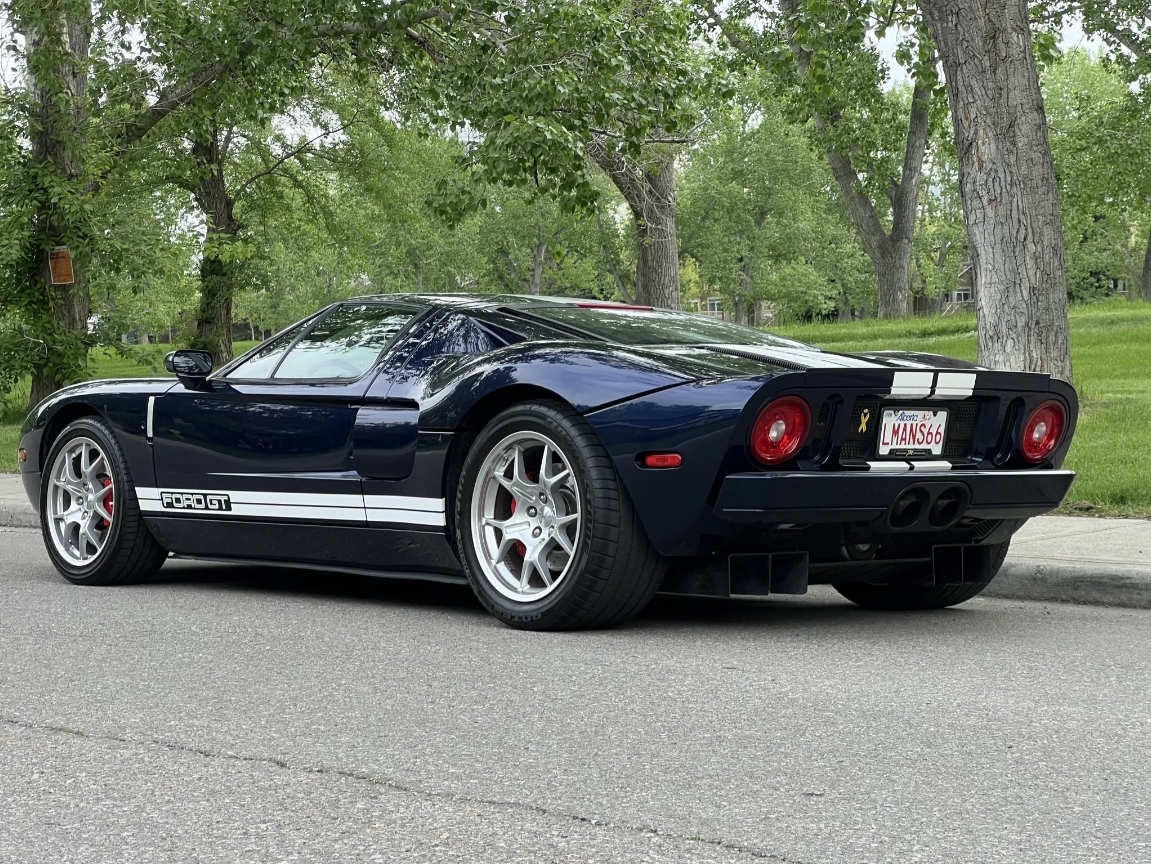
Photo by Bring a Trailer
Ford also offered three optional packages for buyers looking to personalize their GTs: the McIntosh Audiophile Stereo System, Lightweight Forged BBS Wheels, and Painted Racing Stripes. Despite its engineering excellence, early production models faced a suspension control arm recall, requiring replacement parts to be installed on affected vehicles.
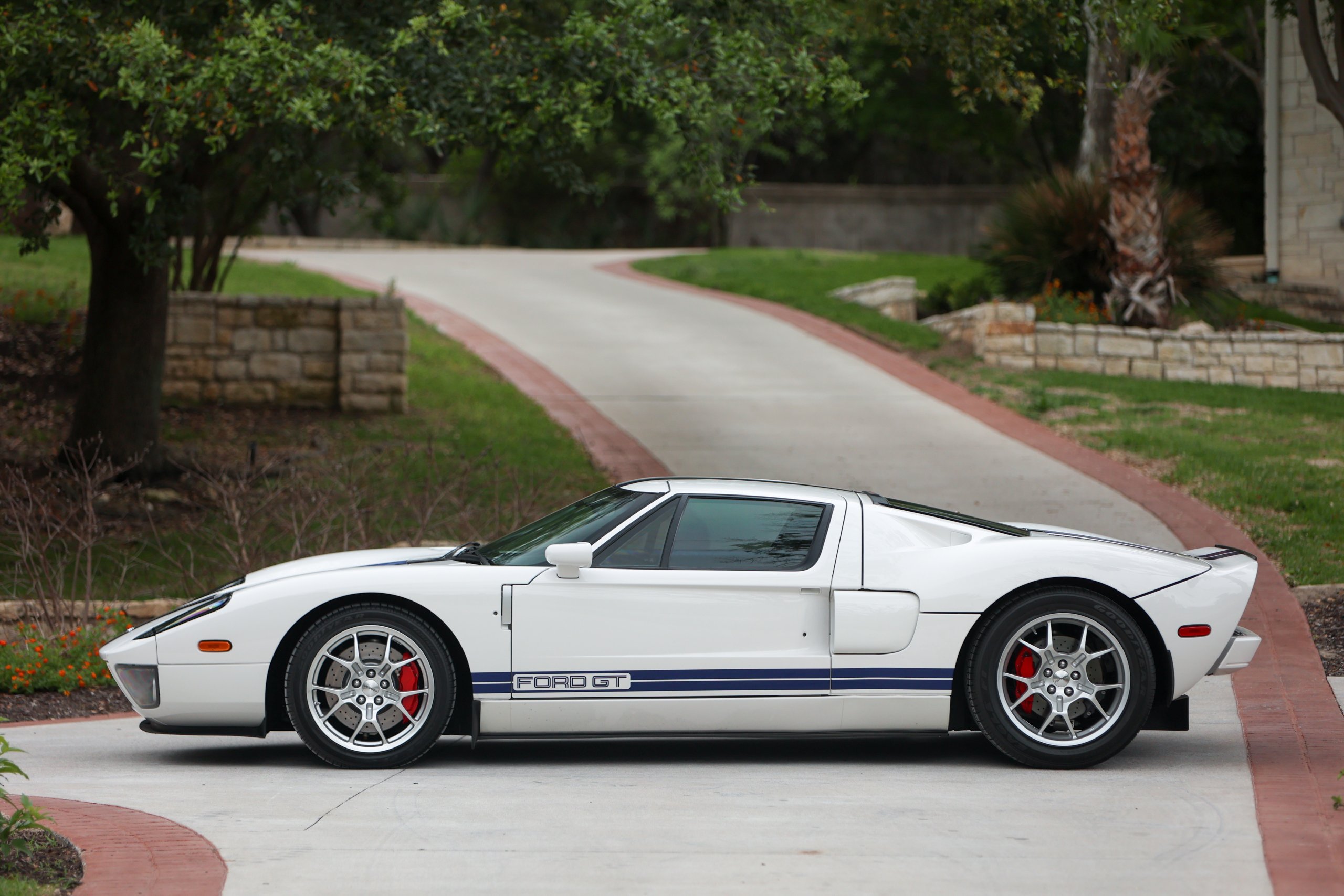
Photo by Hagerty Insurance
Nonetheless, the 2005 Ford GT quickly cemented itself as an instant classic, blending retro styling with cutting-edge performance in a way that honored Ford’s motorsport legacy.
The starting price of the 2005 Ford GT was $139,995 when it was new. However, this price could increase with optional extras such as:
- McIntosh Audiophile Stereo System: $4,000
- Lightweight Forged BBS Wheels: $3,500
- Painted Racing Stripes: $5,350
With all options selected, the final MSRP could exceed $153,000.
2006 Ford GT
The 2006 Ford GT marked the final production year of Ford’s modern supercar, with 2,011 units built, making it slightly rarer than the 2005 model.
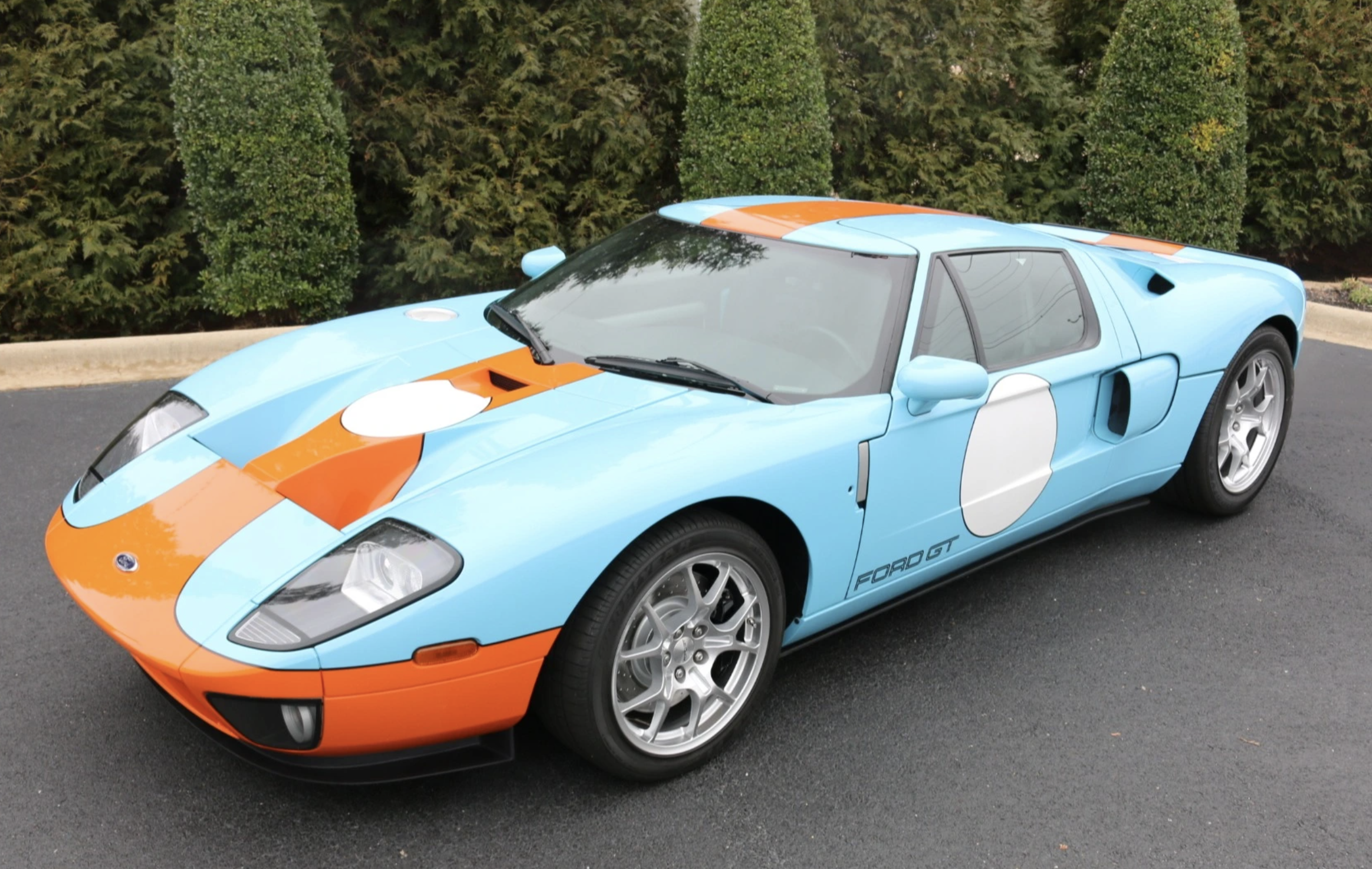
Photo by Car and Driver
This year introduced new color options, including Tungsten Grey Metallic with white stripes, a special 40th Anniversary tribute to the GT40, and the Heritage Blue with Orange Gulf Livery, which paid homage to the 1968–69 Le Mans-winning GT40. The Mark IV Red, Centennial White, Midnight Blue, and Quick Silver color options from the previous year remained available.
Ford made subtle refinements to the 2006 model, improving build quality based on feedback from early 2005 production cars. Notably, stronger suspension components were installed to resolve the control arm recall issues that affected some of the earlier cars.
On September 21, 2006, production officially ended, marking the final run of the first-generation Ford GT and solidifying its status as a modern collectible supercar that bridged Ford’s past and present in motorsport excellence.
The starting price of the 2006 Ford GT remained at $139,995, the same as the 2005 model. And with all options selected, the final MSRP could exceed $153,000.

Ford GT First Generation Common Problems
While the first-generation Ford GT (2005–2006) is fairly reliable, it is not without its issues. Like any high-performance vehicle, certain components have shown vulnerabilities over time, requiring attention from owners and collectors.

Photo by Bring a Trailer
Some early production challenges led to recalls and refinements in later models, while other wear-related issues have surfaced with age and use. Fortunately, most of these problems are well-documented, and with proper maintenance, regular inspections, and preventative care, the Ford GT remains a reliable and exhilarating machine that continues to appreciate in value and desirability.
Regular maintenance and thorough pre-purchase inspections are essential to address these issues and ensure the vehicle’s longevity.
Suspension Control Arms: Early 2005 models experienced a recall due to potential failure of the suspension control arms, leading to replacements in affected vehicles.
Paint Peeling: Some 2006 GTs have reported issues with paint peeling, particularly on body panels.
Engine Performance: A few owners have noted engine problems, such as loss of power or unexpected stalling while driving.
Airbag Recalls: Certain models were affected by the widespread Takata airbag recall, necessitating airbag inflator replacements.
Fuel Fill Issues: Some owners have reported difficulties with refueling, often due to a faulty fuel filler neck design.
Instrument Cluster Failures: Instances of malfunctioning instrument clusters, leading to inaccurate or non-functional gauge readings, have been reported.
Weather Stripping Degradation: Over time, the weather stripping around doors and windows can deteriorate, leading to potential water ingress.
Tie Rod End Wear: Premature wear of tie rod ends has been observed, which can affect steering responsiveness.
Recalls
2005 to 2006 Ford GT vehicles
Suspension Control Arm Failure (Recall No. 04V604000)
Ford recalled certain 2005 Ford GT vehicles due to a defect in the front and rear upper and lower control arms. Some units were found to have casting imperfections, which could lead to fractures, increasing the risk of a loss of vehicle control and potential crash. Owners were notified, and dealers replaced all four control arms and associated fasteners free of charge. This recall was issued in December 2004 before full-scale production began.
Driver Airbag Inflator Defect (Recall No. 14V787000)
As part of the Takata airbag recall, Ford issued a recall for 2005–2006 Ford GT vehicles due to a defect in the driver-side airbag inflator. The inflator could degrade over time, leading to moisture intrusion and a risk of rupture during deployment, potentially causing metal fragments to strike occupants. Ford dealers replaced the driver-side frontal airbag inflator at no cost. The recall was initiated on December 19, 2014.
Passenger Airbag Inflator Defect (Recall No. 15V319000)
Ford expanded the Takata airbag recall to include the passenger-side frontal airbag inflator in 2005–2006 Ford GTs. Similar to the driver-side issue, the passenger-side inflator was at risk of rupturing due to long-term exposure to heat and humidity, posing a serious injury hazard. Owners were contacted, and dealerships replaced the defective passenger airbag inflators free of charge. This recall began on June 2, 2015.
Expanded Takata Airbag Recall (Recall No. 17V024000)
Ford issued another recall covering additional 2005–2006 Ford GT units that may have received faulty replacement airbag inflators. The issue remained the same—potential rupture due to propellant degradation over time, leading to an increased risk of injury or death in the event of airbag deployment. Ford notified affected owners, and dealerships replaced the inflators at no cost. This recall started on January 10, 2017.
Service Parts Airbag Inflator Replacement (Recall No. 21V081000)
Ford discovered that certain replacement airbag inflators installed during previous recalls may have still been defective. As a precautionary measure, another recall for 2005–2006 Ford GT models was issued, instructing dealers to inspect and replace both driver and passenger airbag modules or inflators as necessary. This recall was launched on February 10, 2021.
Maintenance and Ownership Costs
Owning a 2005 to 2006 Ford GT is generally considered cost-effective compared to other supercars of its era. Routine maintenance tasks, such as oil changes and brake servicing, are relatively straightforward and can be performed without excessive expense. The vehicle’s robust engineering contributes to its reliability, resulting in fewer unexpected repairs.
However, sourcing specific components, like body panels or unique interior parts, can be challenging and potentially costly due to the car’s limited production run. Overall, with proper care and regular maintenance, the Ford GT offers a rewarding ownership experience without imposing prohibitive upkeep costs.
Every 5,000 Miles:
- Change engine oil and replace oil filter.
- Inspect tires for wear and rotate as needed.
- Perform a multi-point inspection, including checks of fluid levels, brakes, suspension components, and steering linkage.
Every 15,000 Miles:
- Replace engine air filter.
- Inspect brake pads, shoes, rotors, drums, lines, and hoses.
- Examine the engine cooling system and hoses.
- Inspect steering linkage, ball joints, suspension, driveshaft, and U-joints.
Every 30,000 Miles:
- Replace fuel filter.
- Inspect and, if necessary, replace the cabin air filter (if equipped).
- Inspect exhaust system and heat shields.
- Check automatic transmission fluid level and condition.
Every 60,000 Miles:
- Inspect and replace accessory drive belts as needed.
- Examine and service the cooling system, including a coolant flush and replacement.
- Inspect and lubricate suspension and steering components.
Every 100,000 Miles:
- Replace spark plugs.
- Inspect and service the timing chain and related components.
- Examine and, if necessary, replace the PCV valve.
Please note that these intervals are general guidelines. The Ford GT’s Owner’s Manual provides specific recommendations tailored to the vehicle. For precise maintenance schedules and any additional service requirements, refer to the 2005 Ford GT Owner Manuals or consult with a certified Ford technician.
Following these service intervals helps maintain the vehicle’s performance and can prevent potential issues down the road.
Here is a rough estimate of typical service costs associated with the Ford GT First Generation:
- Oil Change – The Ford GT requires high-quality synthetic oil. An oil change typically costs between $260 and $300 at a dealership. Independent shops may offer this service for approximately $200 to $250.
- Minor Service – Minor services include oil and filter changes, tire rotation, and a multi-point inspection. At a dealership, this service ranges from $300 to $500. Independent shops might charge between $250 and $400.
- Major Service – Major services includes comprehensive inspections, fluid replacements, and component servicing. Dealerships may charge between $1,000 and $1,500 for this extensive service. Independent shops could offer it for $800 to $1,200.
- Tires – A set of four tires such as the Bridgestone Potenza tires typically costs between $1,500 and $2,000, depending on the brand and specifications. Installation and balancing fees at a dealership can add $200 to $300, while independent shops might charge $150 to $250.
- Brakes – Replacing brake pads and rotors on the Ford GT is relatively straightforward. Dealerships may charge between $1,000 and $1,500 for all four wheels. Independent shops might offer the service for $800 to $1,200.
- Clutch – Clutch replacement is a significant service due to labor intensity. Dealerships typically charge around $4,000 for this service. Independent shops may offer it for $3,500 to $4,000. It’s noteworthy that clutch replacements are rarely required unless the vehicle is subjected to extensive racing or aggressive driving.
Options List
The 2005 to 2006 Ford GT came with three key factory options that allowed buyers to personalize their cars.
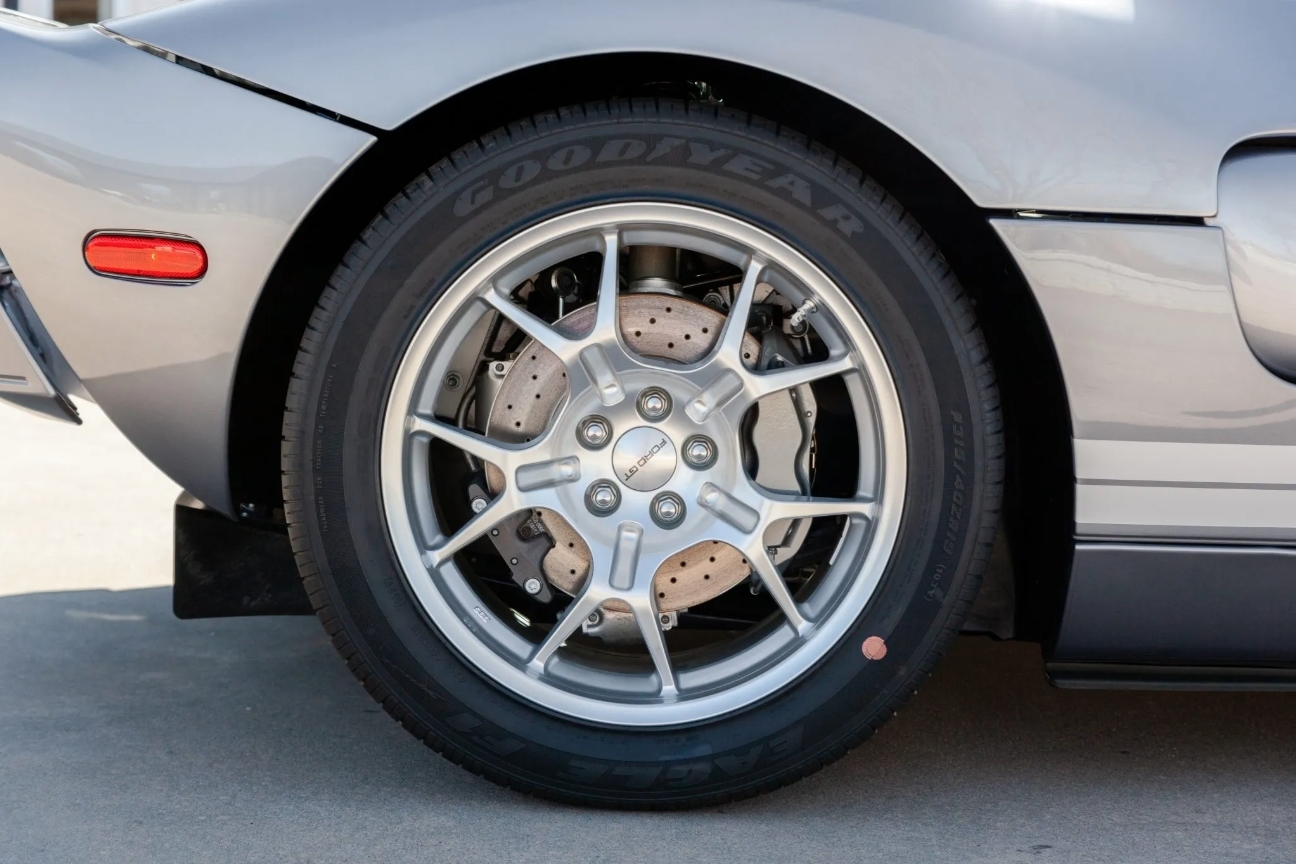
Photo by Bring a Trailer
The McIntosh Audiophile Stereo System was a $4,000 upgrade that improved sound quality with a custom head unit, upgraded speakers, and a retro-inspired design. It was a rare selection, as many GT buyers prioritized performance over audio.
The Lightweight Forged BBS Wheels, priced at $3,500, were a sought-after option for those looking to reduce unsprung weight. These wheels were lighter than the standard cast aluminum set and improved handling while featuring an aggressive 10-spoke design.

Photo by Bring a Trailer
Also, the Painted Racing Stripes, a $5,350 option, added a contrasting stripe design running down the center of the car, enhancing its resemblance to the original GT40.
Unlike vinyl decals, these stripes were painted and clear-coated for a seamless finish. Factory-painted stripes are highly desirable today, as they contribute to resale value. While there were no performance add-ons, these factory options played a significant role in customizing the Ford GT’s appearance and driving experience.
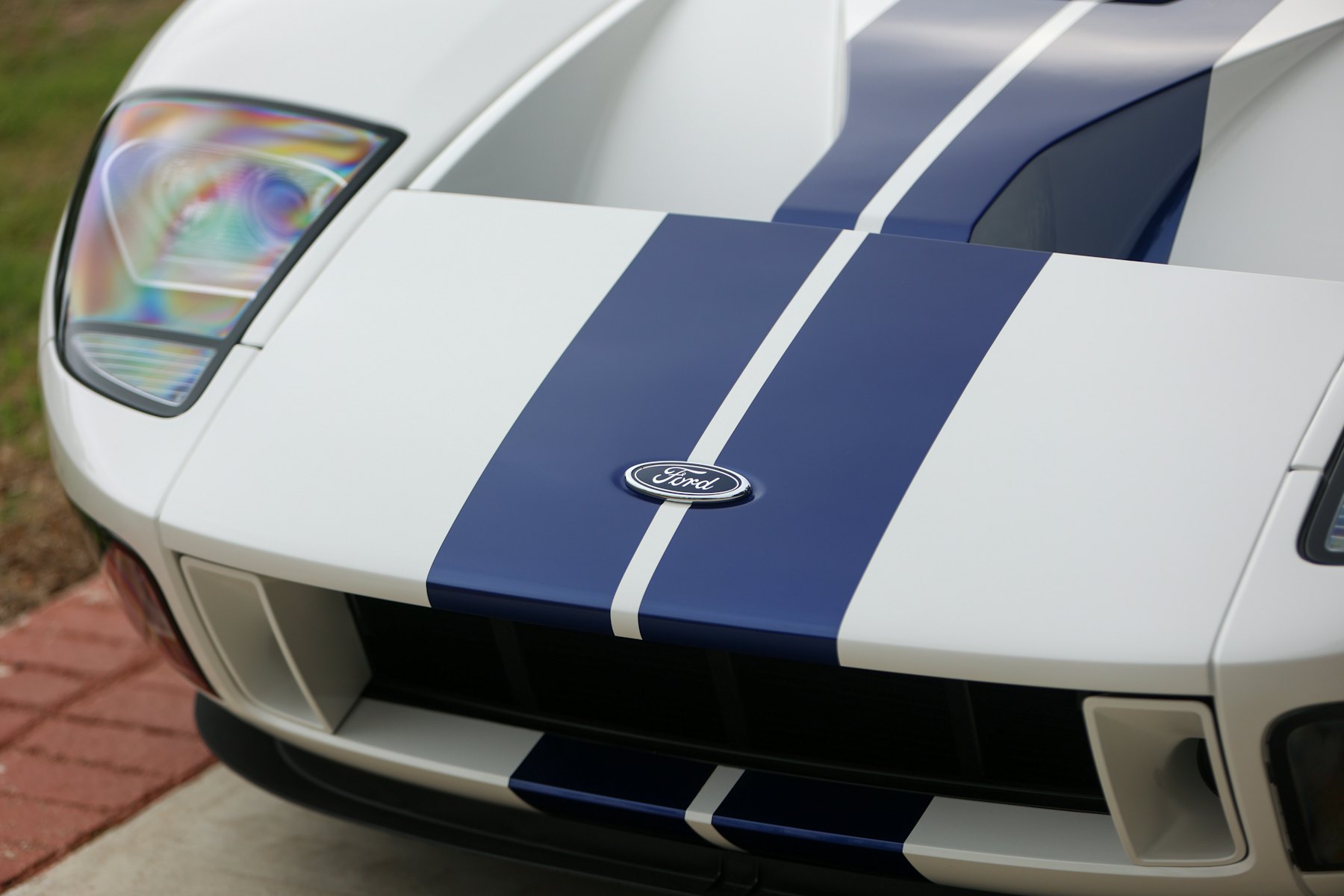
Photo by Hagerty Insurance
Fully optioned examples tend to be more valuable, with the McIntosh stereo and painted stripes being the most sought-after among collectors.
2006 Ford GT options list
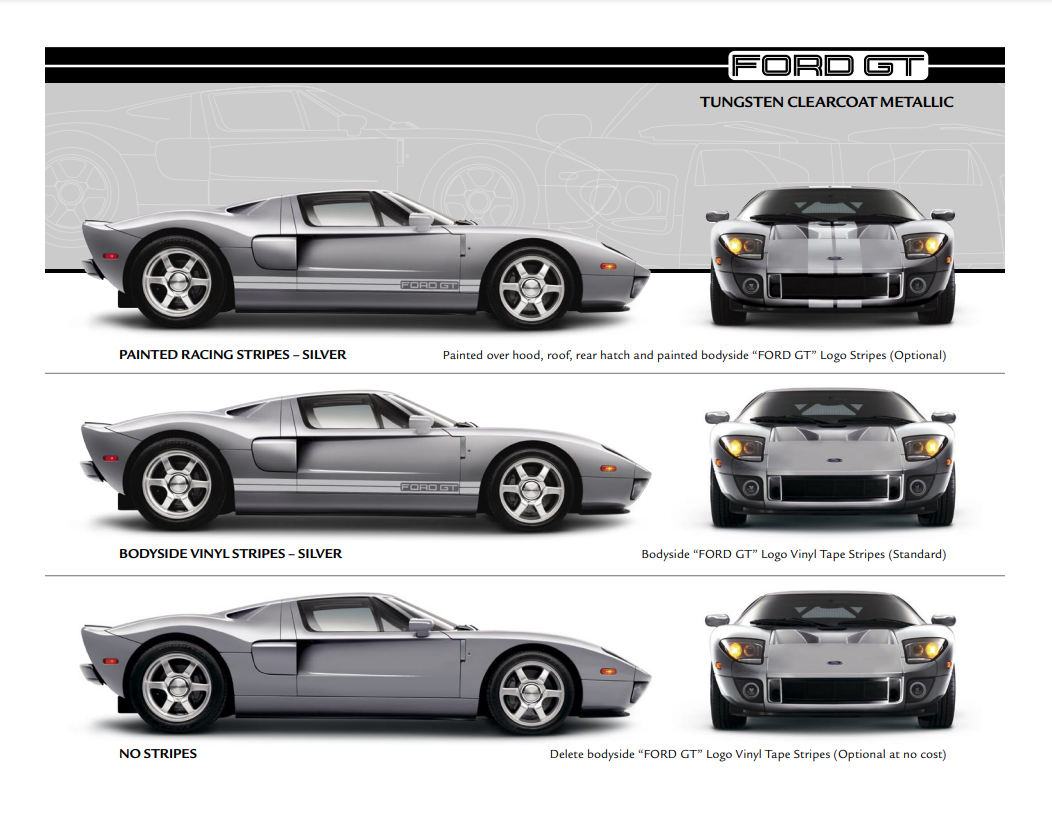
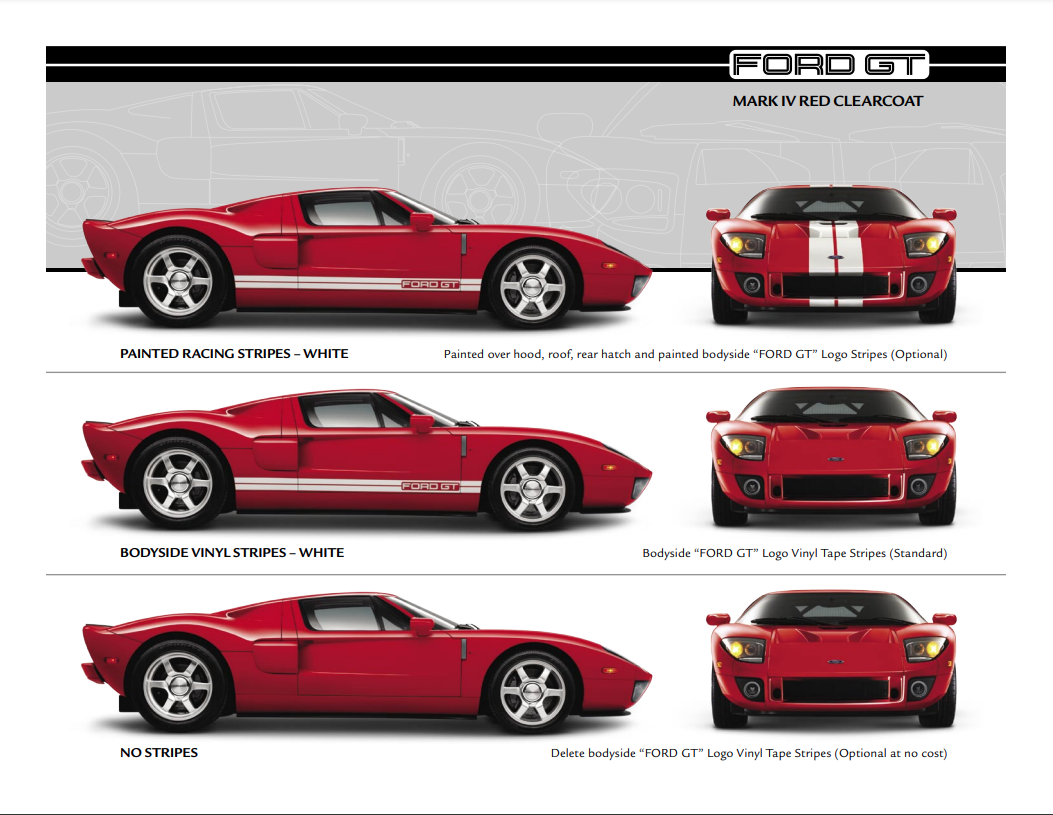
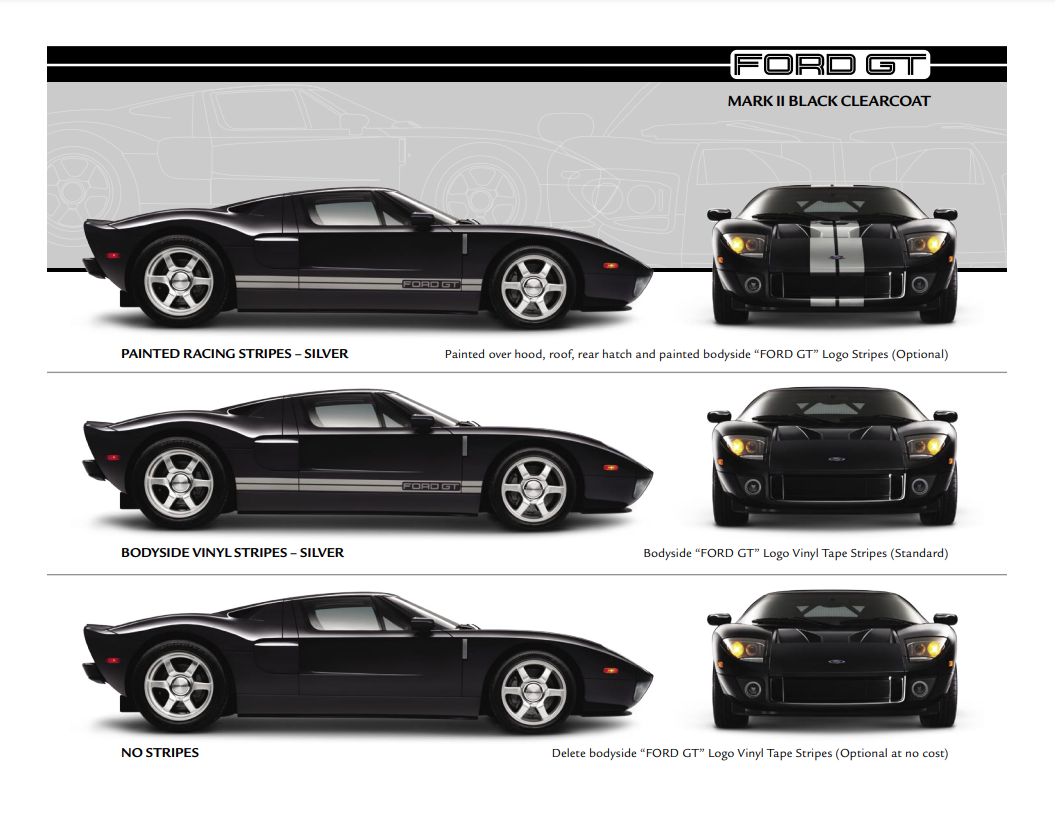
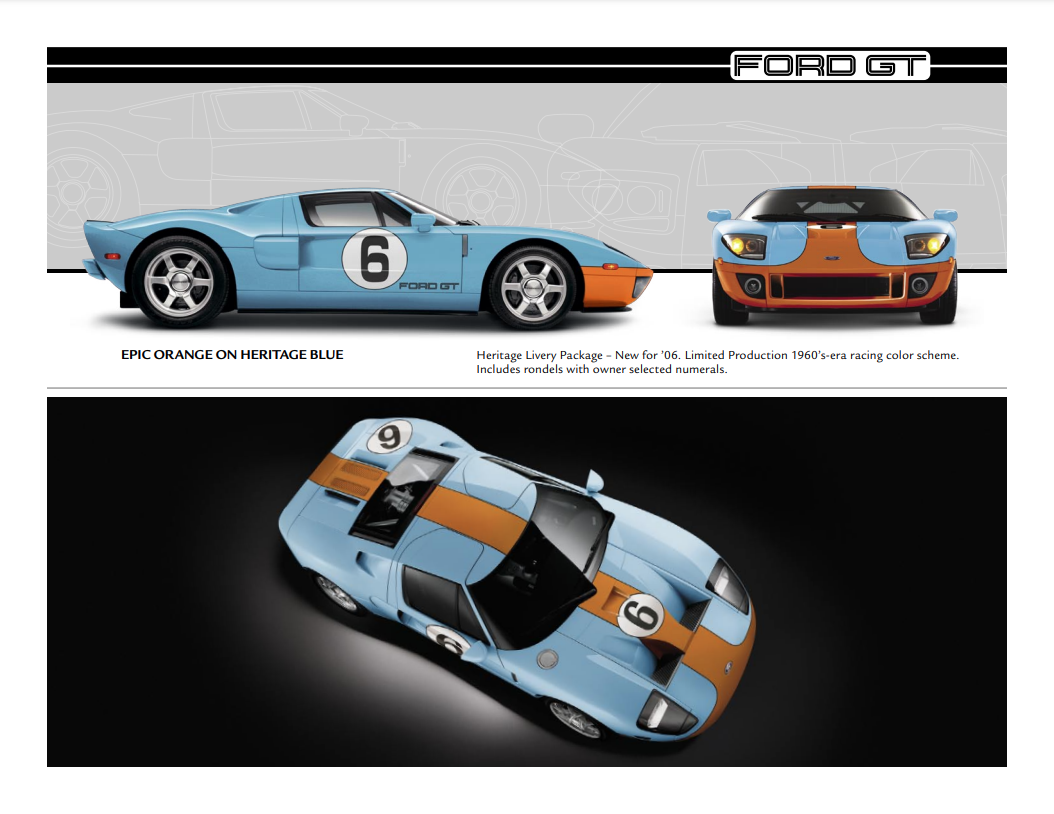
Key Options
- McIntosh Audiophile Stereo System
- BBS Forged Aluminum Wheels
- Painted Racing Stripes
- Painted Brake Calipers (Red or Grey)
- Side Stripe Delete
Ford GT First Generation Price and Value
The Best Ford GT First Generation to Buy
When it comes to choosing the best first-generation Ford GT (2005–2006) to buy, several key factors should be considered, including model year, factory options, special editions, and overall condition.
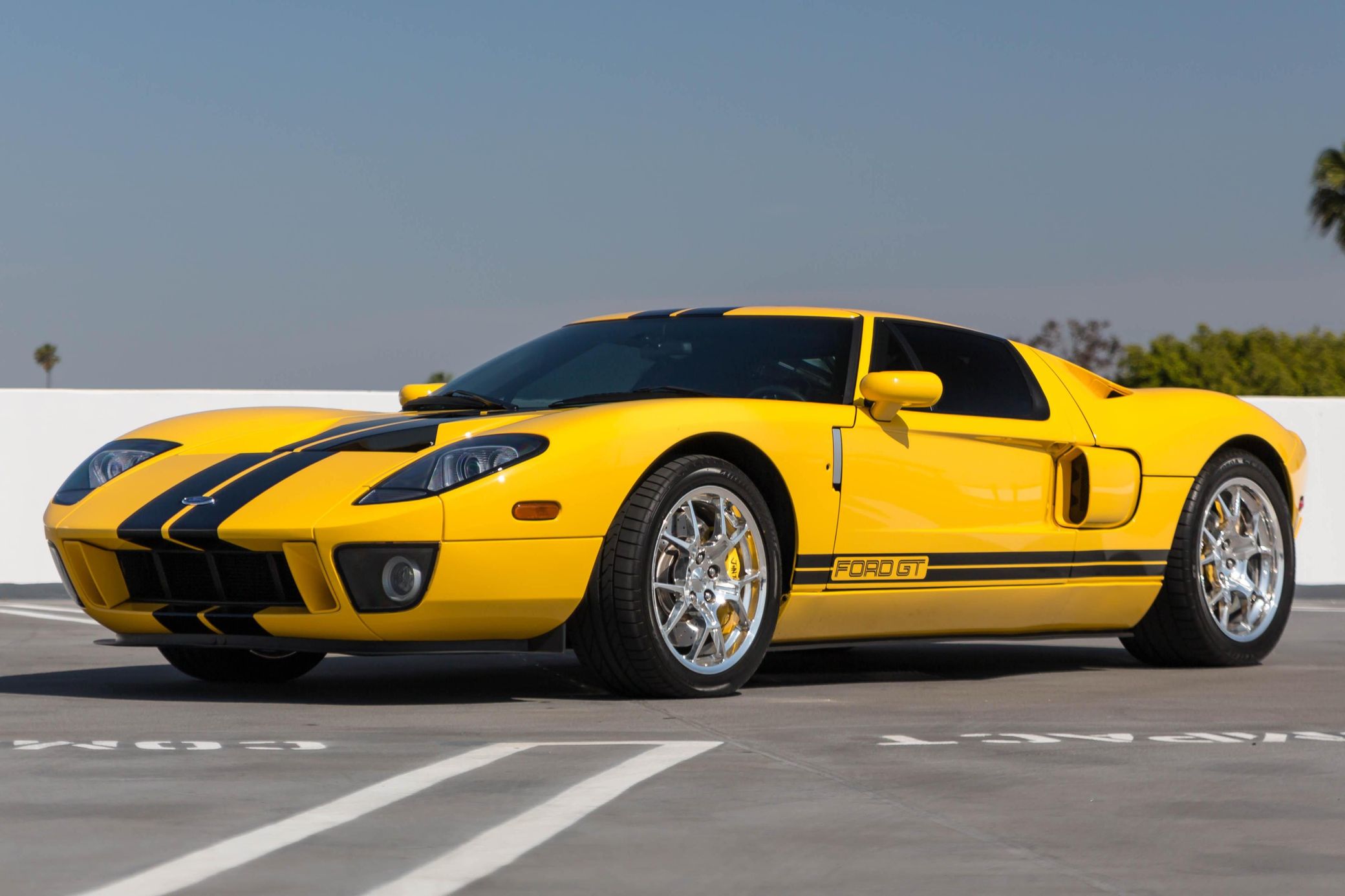
Photo by Cars and Bids
For those looking for the most desirable version, the 2006 model year is a great choice. As the final year of production, it benefits from improved build quality following refinements made after early production issues in 2005. The Heritage Edition, introduced in 2006, is the most collectible variant.
Featuring the iconic Gulf Oil racing livery—a Heritage Blue exterior with Epic Orange stripes—it pays tribute to the 1968–69 Le Mans-winning GT40. With only 343 units produced, the 2006 Heritage Edition is one of the rarest and most valuable first-generation Ford GTs.

Photo by Auto Evolution
Beyond model year, option selection plays a role in desirability. The most sought-after factory options include painted racing stripes, lightweight forged BBS wheels, and the McIntosh Audiophile Stereo System. GTs equipped with all three options tend to command a premium in the collector market.
Condition is another critical factor when choosing the best Ford GT to buy. Vehicles with low mileage, original paint, and no modifications tend to hold the highest value. Many GTs were preserved as collectibles, but some were driven aggressively, so a pre-purchase inspection (PPI) is highly recommended. Ensuring that recalls—such as the control arm and Takata airbag recalls—have been addressed is also essential.
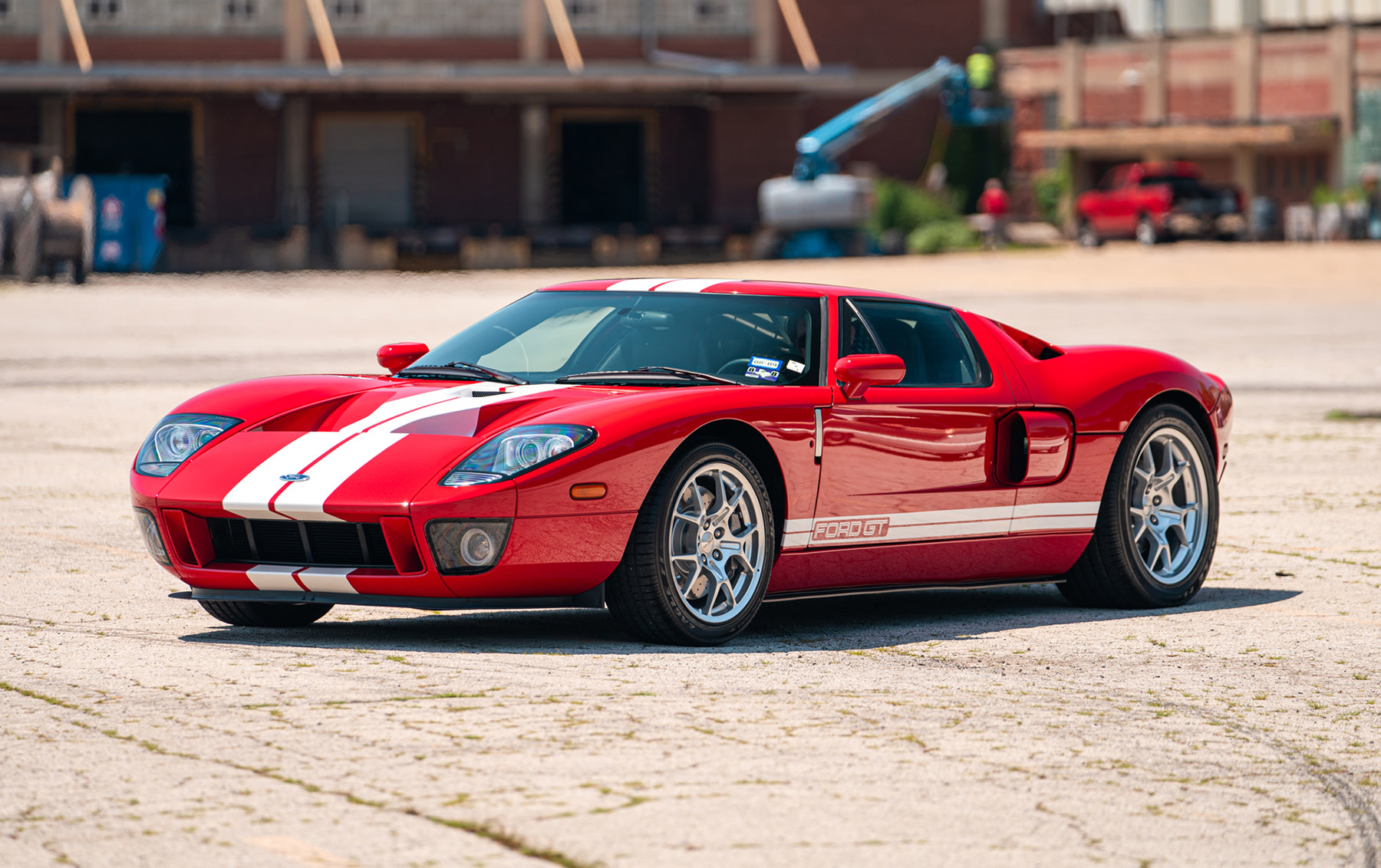
Photo by Gooding & Company
For long-term value and collectibility, a 2006 Ford GT with low mileage, full-service history, and desirable factory options is the best choice. The 2006 Heritage Edition, with its Gulf Livery, is the most valuable and historically significant, making it a standout investment among all first-generation Ford GTs.
Here is the colour breakdown for production:
2005 Production
- Mark IV Red: 766 units
- Centennial White: 503 units
- Midnight Blue Metallic: 265 units
- Mark II Black: 238 units
- Satin Silver: 156 units
- Speed Yellow: 97 units
- Quick Silver: 1 unit
- Gulf Blue: 1 unit
2006 Production
- Tungsten Silver: 541 units
- Heritage Blue (Gulf Livery): 343 units
- Mark IV Red: 348 units
- Mark II Black: 292 units
- Centennial White: 222 units
- Midnight Blue Metallic: 190 units
- Speed Yellow: 75 units
Conclusion
In summary, with a price of $430,000+, the 2005–2006 Ford GT offers a piece of performance and heritage. Its supercharged 5.4-liter V8 engine delivers 550 hp, and a top speed of 205 mph. The design pays homage to the legendary GT40, with classic styling and modern performance.
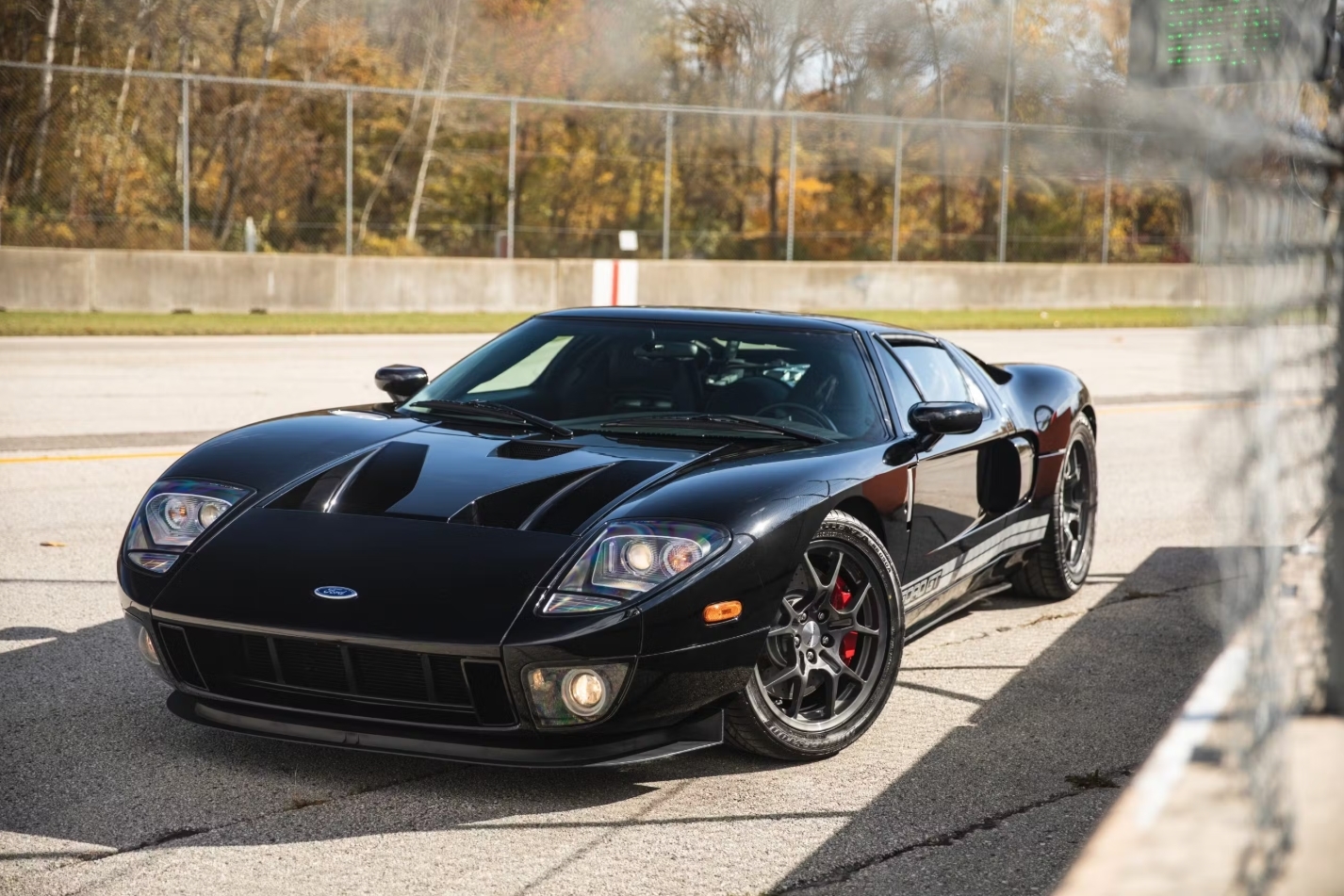
Photo by Hagerty Insurance
While alternatives like the Porsche Carrera GT, the Ferrari 360 Challenge Stradale, and the Lamborghini Murciélago exist, the Ford GT distinguishes itself through its unique combination of American muscle, racing pedigree, and limited production numbers. Its rarity and historical significance have contributed to its strong appreciation in value over time.
For enthusiasts seeking a supercar that embodies American automotive excellence and offers both exhilarating performance and investment potential, the first-generation Ford GT stands out as an exceptional choice.
Car Hacking Shortcuts
-
Look for models with all three factory options: BBS forged wheels, McIntosh stereo, and painted racing stripes
-
Opt for the 2006 Heritage Edition for exclusivity and higher long-term value
-
Prioritize low-mileage, original, and unmodified examples for better resale potential
-
Verify that all recalls, including airbag and control arm issues, have been addressed
-
Check for comprehensive service history to ensure proper maintenance and long-term reliability
Resources
- 2006 Ford GT PDF Brochure
- 2006 Ford GT Heritage PDF Brochure
- 2006 Ford GT Red PDF Brochure
- 2006 Ford GT Tungsten PDF Brochure
The post Ford GT First Generation (2005–2006) Buyers Guide first appeared on Exotic Car Hacks.
The post Ford GT First Generation (2005–2006) Buyers Guide appeared first on Exotic Car Hacks.

